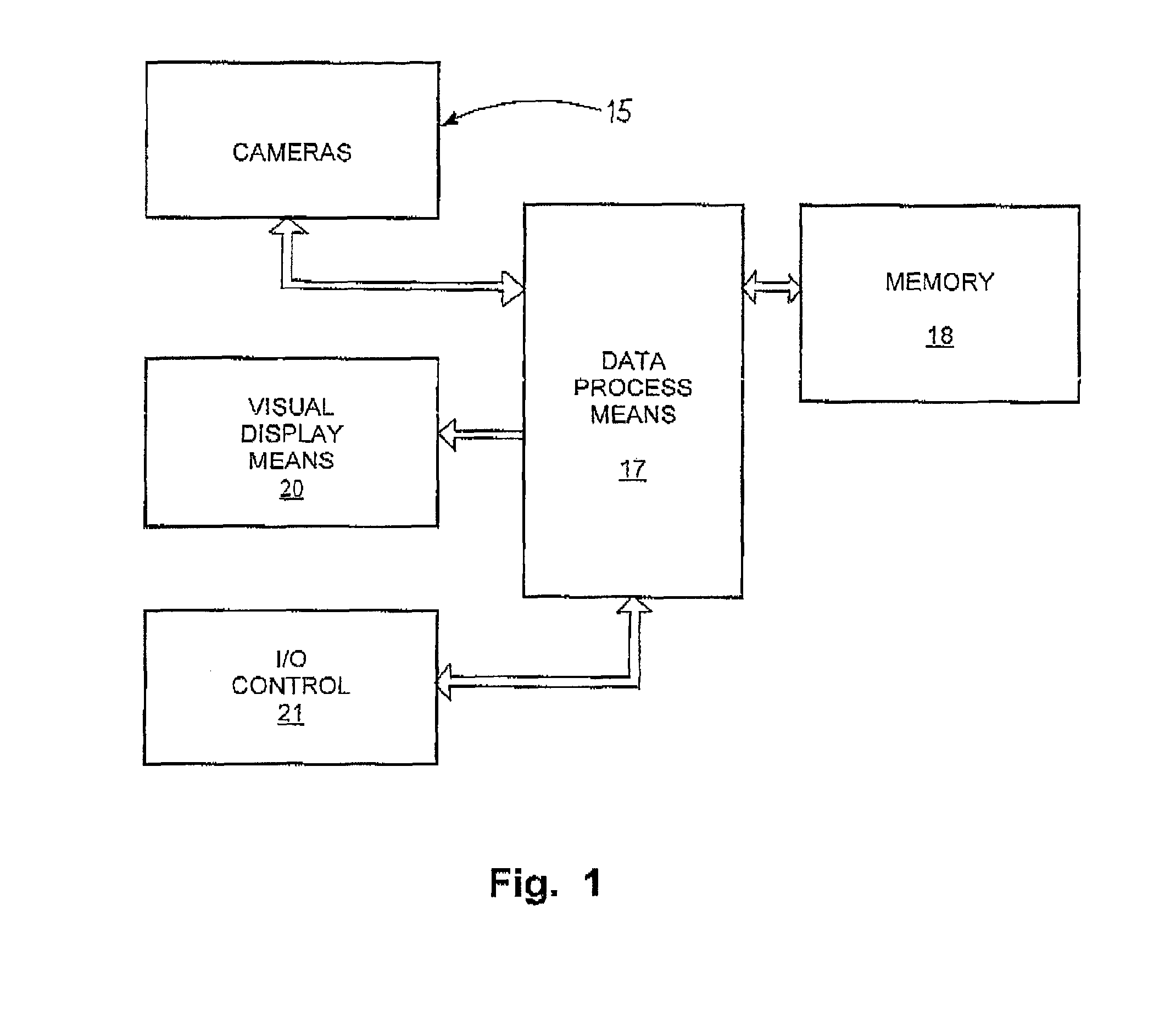Detecting contacts during sporting activities etc
a technology for detecting contacts and sporting activities, applied in the field of detecting contacts during sporting activities etc., can solve problems such as system limitations, obvious dislocation, and affecting the validity of calls made by umpires and linesmen
- Summary
- Abstract
- Description
- Claims
- Application Information
AI Technical Summary
Benefits of technology
Problems solved by technology
Method used
Image
Examples
Embodiment Construction
[0076]The apparatus in FIG. 1 includes one or more digital cameras 15 directed in use towards a target area such as a sporting, game, recreational, or entertainment area, or area where an activity is to be undertaken. Camera 15 need not be fixed in location but could be movable by an operator, and indeed could be hand held since the process and operations of the invention can be performed provided the camera is directed to the target area when the particular contact incident of interest occurs. The camera could be a digital “still” camera operated to capture an image of the target area shortly after the contact of interest occurs. However for most purposes the implementation of the invention will involve at least one digital video camera which in use is mounted in a known location and is directed towards a respective target area during the course of the activity so as to capture image frames of the target area. A camera capturing frames at 92 frames per second has been successfully ...
PUM
 Login to View More
Login to View More Abstract
Description
Claims
Application Information
 Login to View More
Login to View More - R&D
- Intellectual Property
- Life Sciences
- Materials
- Tech Scout
- Unparalleled Data Quality
- Higher Quality Content
- 60% Fewer Hallucinations
Browse by: Latest US Patents, China's latest patents, Technical Efficacy Thesaurus, Application Domain, Technology Topic, Popular Technical Reports.
© 2025 PatSnap. All rights reserved.Legal|Privacy policy|Modern Slavery Act Transparency Statement|Sitemap|About US| Contact US: help@patsnap.com



